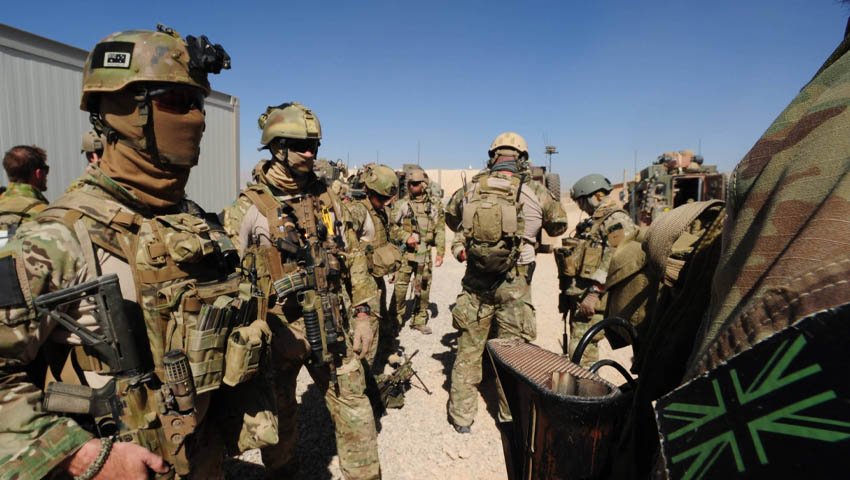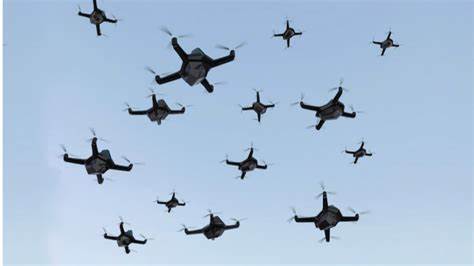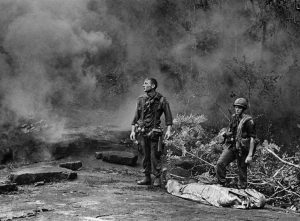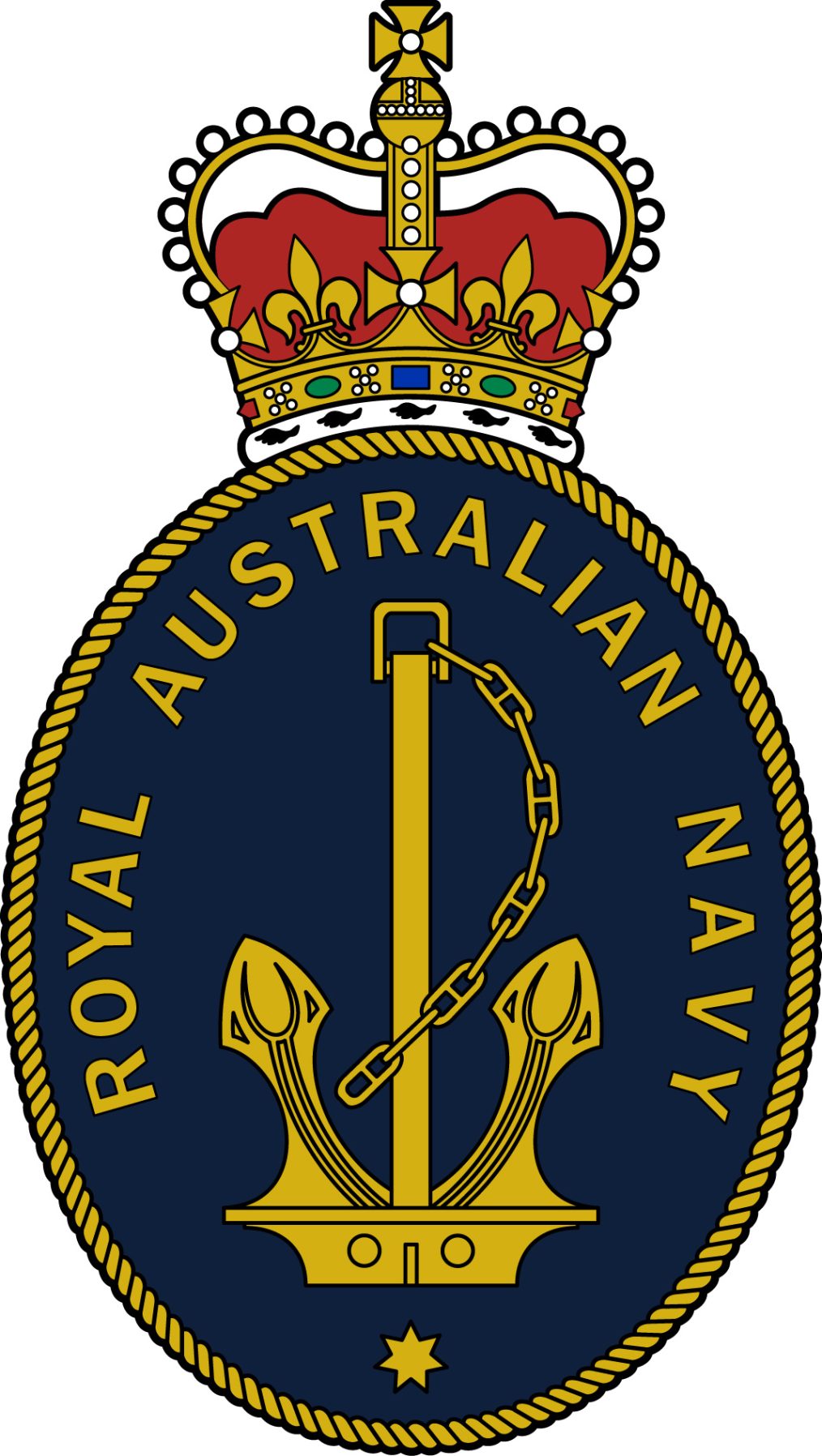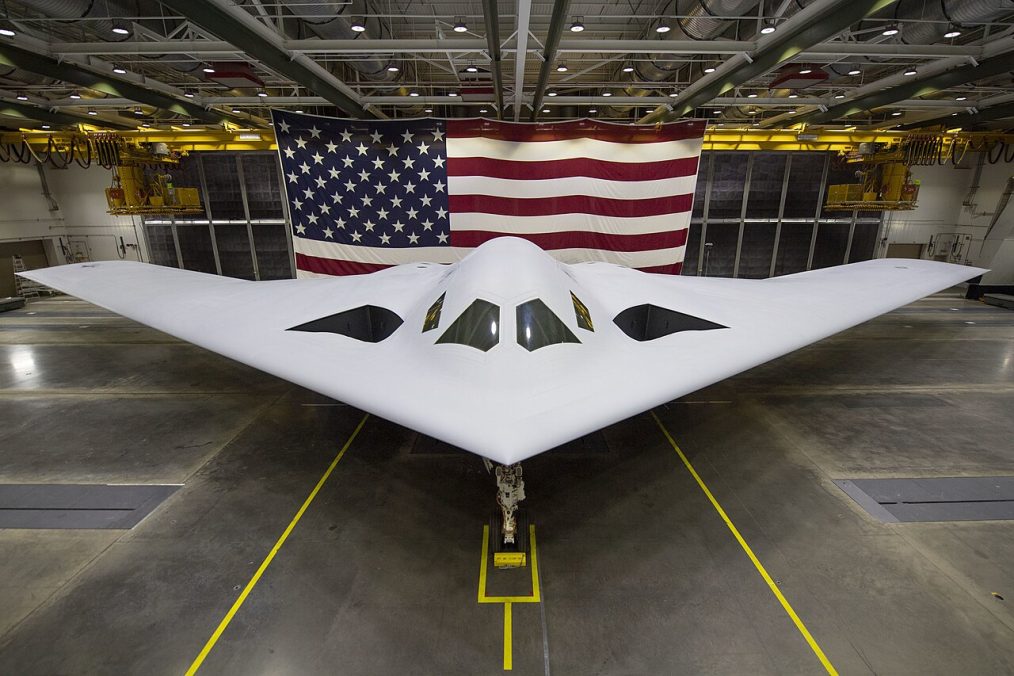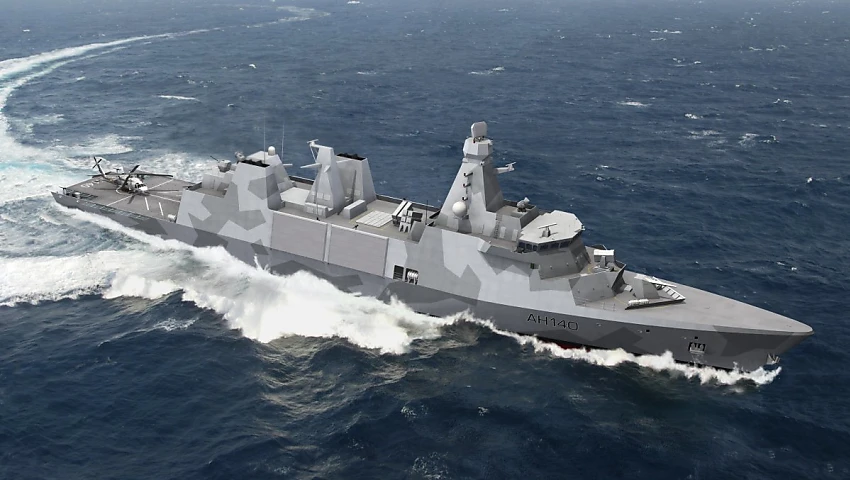The Duty First Podcast Trailer is OUT NOW at www.dutyfirstpodcast.com.au
Happy 75th RAR and thank you to all those who helped put our first 75 years into this great piece of living history!
Celebrate 75 years of the Royal Australian Regiment launching 23 November 2023.
Australian Army conducted a demonstration of autonomous and uncrewed systems including swarms.
The History of the Armed Forces of Châu Duc District (1945-2014), 2014 – is a very professional and glossy publication. It includes several photographs – however some are “mislabelled” – such as below:
“Australian troops recovering the body of a comrade”
That photograph however is a “cropped” copy of the renown US “Agony of War” photograph. ie of US troops (4th Battalion/503rd Regiment/173d Airborne Brigade) taken on 14 August 1966 by PFC Paul Epley during Operation Toledo south of Gia Ray in Long Khánh Province (vic YS 791932). The “un-cropped” photograph is below:
US “Agony of War” (full photograph) – 173d Airborne Brigade, 14 August 1966
Right to left: SP4 Ruediger Richter, PFC Daryl R. Corfman (in the poncho/body-bag), and SGT D.E. Spencer. (see the 173d Airborne Brigade Operation Toledo report at US Defense Technical
Information Centre – Report AD510789).
Note however, that the photograph is correctly captioned by communist historians: as “173d Airborne Brigade” troops in Trần Văn Khánh (et al/đtg) and: Ban Chấp Hành Đảng bộ tỉnh Bà Rịa-Vũng Tàu (Executive Committee of the Bà Rịa-Vũng Tàu Party), Lịch sử Đảng bộ tỉnh Bà Rịa-Vũng Tàu 1930 – 1975 (The History of the Party in Bà Rịa-Vũng Tàu Province 1930-1975), Nhà Xuất bản Chính trị Quốc gia (National Political Publishing House), Hà Nội, 2000.
The VC Châu Đức District covered the “western-half”- and some of the north-eastern part, of the Saigon
Government’s Phước Tuy Province. If readers would like a complimentary copy of the research note:
“Communist Views of the 1st Australian Task Force (2020, 2023) – 101 pages with maps and photographs,
email Ernie Chamberlain @ ernestchris@tpg.com.au.
The Spectator Australia
LEAD ARTICLE
There is a rather delicious irony in the timing of Sky News’s documentary about the chaos, destabilisation, backstabbing and all-round mayhem of the Turnbull/Morrison years. In the last few weeks, the Coalition under Peter Dutton is finally resembling the conservative powerhouses of the Howard government and Abbott opposition; certainly for the first time since Machiavellian Malcolm and Lady Julie Macbeth began their dastardly plotting and treachery back in 2014. As readers of this magazine have known all along, the problem within both the Liberal and National parties has been the bedwetting brigade, and the damage they have done to this nation. Nothing else.
The antidote to chaos and confusion is of course conviction. Under the leadership of Mr Dutton, ably helped by the Nationals, the Coalition found their mojo when they decided to oppose the Voice. As we argued at the time, this symbolised much more than taking a side in a constitutional referendum. Rather, it was the first moment since the election of Tony Abbott that the centre-right genuinely stood for something and was prepared to fight on a point of principle. It would now appear, again as we predicted, that having enjoyed such success on 14 October, comprehensively trouncing the combined forces of political, bureaucratic, academic, corporate and media wokery, Mr Dutton and the Coalition have found a taste for it. Welcome to the culture wars, ladies and gentlemen.
From the moment the world first heard of the horrors, the murders and the barbaric rampage by an indescribably evil mob of Hamas and Palestinian thugs on 7 October, Anthony Albanese’s Labor government has been completely at sea, rudderless and floundering in an ocean of political correctness, self-interest and antisemitism. Ministers have contradicted each other, making ignorant and dangerous accusations of ‘collective punishment’, insultingly preaching to Israel to ‘follow international law’ (as if they weren’t already doing so), banging on about quasi-fabricated ‘Islamophobia’ and engaging at every opportunity in the sinister game of moral equivalency between Hamas and the Israelis.
In contrast to Labor, whose default position appears to be indistinguishable from that of your average flag-waving undergraduate activist, the Liberal party under Peter Dutton is clear in its convictions and unswerving in its support for Israel. This is to be applauded. Not because Israel is an important ally, which it is, nor because Hamas is a proscribed terrorist organisation, which it also is, but because political leadership demands from time to time moral leadership. And moral clarity. To wit; there was a ceasefire and it was broken on 7 October by Hamas.
To quote one of Australia’s greatest journalists, now living in New York, Miranda Devine: ‘War is hell but it really isn’t hard to know which side to support –and it’s not the one that bakes a baby alive in an oven, gang rapes women, and hacks an injured man’s head off with a shovel.’
Peter Dutton’s call for a national cabinet on antisemitism is a smart idea built on strong principles. This magazine is not a fan of national cabinets per se, but in this instance we recognise the importance. Equally important has been Mr Dutton’s criticism of the High Court decision to release into our community a bunch of serious criminals and his opposition to the Prime Minister’s endless overseas engagements which increasingly appear to be nothing more than a desperate attempt to avoid being anywhere near his colleagues. A sentiment we can only sympathise with.
Mr Dutton is heading towards the Lodge. If he sticks to his guns on these and other issues, such as on energy (we urge to him abandon net zero) and the economy, that path will become ever easier.
The commander of an Australian warship has been relieved of duty amid an ongoing inquiry into alleged misconduct related to the prohibited consumption of alcohol at sea. The Defense department has confirmed the removal of the senior officer from command of the Royal Australian Navy (RAN) vessel, citing concerns about “unacceptable behavior.” Details regarding the incident remain undisclosed due to privacy obligations.
A defense spokesperson emphasized the gravity of the situation, stating that there is no tolerance for unacceptable behavior within the military. They assured that all allegations are treated seriously and subjected to thorough investigation in accordance with due process.
Military sources reveal that the commander is under investigation for “heavy drinking” during naval operations and an incident at an international event that reportedly caused embarrassment in the presence of United States Navy counterparts. Some insiders claim that the RAN is attempting to conceal the episode, alleging a departure from standard procedures for the transfer of command.
In response to questions, Chief of Navy, Vice Admiral Mark Hammond, declined to comment on the specifics of the incident but affirmed that the organization is addressing the matter appropriately. He highlighted the high expectations placed on command teams, emphasizing a culture of high performance, strong reporting, and accountability.
While the Defense department remains tight-lipped about the details, it is known that the consumption of alcohol at sea is generally restricted to special occasions, with ANZAC Day being an exception where sailors, excluding officers, are provided with a limited “beer issue” as per current Navy regulations.
The B-21 will play a critical role in ensuring America’s enduring airpower capability. (U.S. Air Force photo)
The highly anticipated B-21 Raider has successfully completed its inaugural test flight, marking a significant milestone as the first public flight of a sixth-generation combat aircraft. Developed by Northrop Grumman, the B-21 Raider is heralded as the world’s “first sixth-generation aircraft” and a transformative advancement for the US Air Force’s global strike capabilities.
Unveiled on December 2, 2022, at Northrop Grumman’s Palmdale, California facility, the B-21 Raider is set to replace the aging B-1 Lancer and B-2 Spirit bombers, serving as the cornerstone of the US Air Force’s strategic bomber force. The maiden flight, originating from the Northrop Grumman Plant 42 facility in Palmdale, California, showcased the aircraft’s smaller size compared to its predecessor, the B-2 Spirit, along with two large bomb bays and an array of sensor suites.
The Raider platform is designed to usher in a new era of capability and flexibility through advanced integration of data, sensors, and weapons. It possesses the capability to deliver both conventional and nuclear payloads, employing a mix of stand-off and direct attack munitions to establish itself as one of the most effective aircraft in the sky.
Since the contract award in 2015, Northrop Grumman has mobilized a nationwide team of over 8,000 individuals, including industry partners and Air Force personnel across 40 US states, to design and build the world’s most advanced strike aircraft. The B-21 Raider, part of a larger family of systems, is crucial to America’s national strategic deterrence strategy, providing advanced long-range precision strike capabilities and additional functionalities like intelligence, surveillance, reconnaissance, electronic attack, and multi-domain networking capabilities.
The digital ecosystem supporting the B-21 Raider throughout its life cycle facilitates through-life maintenance, sustainment, and upgrade cost reductions, enabling rapid technology upgrades to stay ahead of future threats.
The US Air Force plans to order a minimum of 100 B-21 Raiders to modernize its aging fleet of B-1 Lancer and B-2 Spirit bombers, ensuring a credible and survivable airborne strategic strike capability.
The Common Debt of Australia has deep roots in the economic transformations witnessed over the past 40 years. In this relatively short span, Australia has undergone a drastic shift from a thriving, self-sufficient nation to one grappling with significant economic challenges.
Not too long ago, prosperity was abundant, with jobs readily available throughout the country. Families thrived on a single income, and iconic industries such as iron ore, steel, shipbuilding, and car manufacturing, including renowned brands like Holden, Chrysler, Mitsubishi, Toyota, and Ford, fuelled the nation’s economic engine. Australia proudly manufactured a diverse range of products, from household appliances to vehicles, fostering a sense of national pride with the label “PROUDLY MADE IN AUSTRALIA.”
Rural towns were vibrant hubs connected by an extensive rail network, and local businesses, including corner stores, milk bars, and hardware shops, thrived. Flea markets dotted the weekends, offering fresh and local produce. Public utilities like power stations, water, and gas employed thousands, ensuring affordability, and sustaining various industries nationwide.
However, the narrative took a turn as the government shifted its approach, corporatizing itself and engaging in direct competition with private enterprises. Local councils expanded their reach, acquiring tourist parks and dictating terms to others, leading to a decline in community strength.
The downward spiral accelerated with the outsourcing of industries and businesses, facilitated by free trade agreements that allowed foreign competitors to flood the Australian market with cheap, sub-standard products. The once tight-knit community, marked by mutual respect and a friendly “G’day,” began to erode, replaced by security screens, burglar alarms, and a pervasive sense of fear and stress.
Foreign countries entered the scene, acquiring Australian resources, displacing farmers, and taking over power stations. Educational funding was cut, trade skills teaching slowed, and 457 visas were introduced, replacing skilled workers with cheaper foreign labour. The sale of public assets, such as forests, to foreign owners further weakened the nation.
To compensate for lost income, the government introduced new taxes, levies, and funding cuts to essential services like emergency services, police, and public housing. The public was burdened with additional costs, including the controversial Goods and Services Tax (GST). Meanwhile, politicians enjoyed hefty pay raises, seemingly disconnected from the struggles faced by ordinary Australians.
Now facing a massive debt, the government urges citizens to tighten their belts, forcing the elderly back into the workforce until the age of 70. The once-mighty manufacturing plants now stand as empty monuments to a bygone era, and the ubiquitous “MADE IN CHINA” label serves as a painful reminder that the nation is funding its own demise.
As the government grapples with financial challenges, the question lingers: How did this once self-sufficient nation fall so far, and what will it take to reclaim its former glory?
Respected policy advocate for veterans and their families, Bill Westhead, offers the follow analysis and insights response to Mark Schröffel’s article on the RSL’s National Forum for Ex-Service Organisations.
By Bill Westhead – AVN
ESO’s are a necessary part of veteran support system because of the vacuum left by Government, in particular the ADF’s inability to deliver on its duty-of-care in support our personnel and DVA’s failure in its mission to support the health and wellbeing of our veterans.
For the record, it was RSL Victoria (RSL Vic) that initiated the ESO discussions back in March 2022 but their efforts were initially thwarted by the national leadership of RSL Australia (National). Presumably for beating them to a good idea or overstepping some bureaucratic boundary.
I was closely involved with the two forums sponsored by RSL Vic in March and August 2022. Representatives from National, although invited, were conspicuously absent.
The experience from the RSL Vic events, as recorded in the post activity reports, showed the utility of the meetings but highlighted the inability to achieve a consensus on various matters addressed at the meetings. It seems that National finally decided to shoulder its way into a leadership position, probably after detecting the detecting the vibe coming from the Royal Commission and the veteran community at large.
In reference to your comments in relation to criticism of RSL and the ESO Peak Body, the fact is that some ESO’s and RSL branches actively opposed the Royal Commission (RC) and there is still corporate reticence and lethargy in relation to frank submissions and cooperation with the RC. Continued opposition and lack of cooperation to the RC, as bluntly stated by Commissioner Kaldos. This position seems to be injected into the DNA of some stakeholders.
My view is that the RSL, the ADF and DVA aren’t reading the room concerning the outcomes of RC and what it has revealed. This, coupled with concerns about the public services hard earned reputation for inaction and its ability to strive towards the status quo puts the whole process of the RC into jeopardy.
Evidence given at every hearing to date fortified the suspicions and tribulations of Veterans; the appalling behaviour, bordering on the malfeasant, of the culture and administration from DVA and the ADF has reinforced the necessity for the RC. The recent statements from Commissioner Kaldos after the Melbourne hearings and his appearance at the National Press Club have encouraged Veterans that he and the other Commissioners have grasped the core of the issues.
Veterans should be thankful that Commissioners Kaldos, Douglas and Brown have shown great courage supporting Veterans and Defence personnel in the face of significant obfuscation and obstruction from stakeholders.
Across its continuum the RC has revealed a lack of accountability, the hiding behind opaque walls of public service remits and non-compliance with metrics across the serving and Veteran community. In Victoria, the government bodies that supposedly hold ESOs to account, ACNC and CAV, are failing to scrutinise ESOs and respond professionally to member’s grievances.
Clearly, Veterans and defence personnel, need an independent voice to hold stakeholders to account. The proposed appointment of a permanent National Commission(er) (NC) will go to some way to hold stakeholders to account and measure their performance. The Warragul RSL proposes a structure, shown below, for the ESO Registration and Compliance:
The NC will have other functions and responsibilities but ESOs need to subjected to scrutiny by the NC to be considered legitimate ESOs. Under this concept an organisation would be require to meet minimum standards and be able to demonstrate the following:
- Have and publish a Constitution and/or Rules registered at ACNC and the NC;
- That the ESO leadership is democratically elected by its membership through a process approved by the ACNC and NC;
- The ESO is to have a formal planning process with measurable targets submitted to the NC annually;
- The ESO is to have annual elections, those elections audited by an independent body and the results declared publicly;
- The ESO is to publish its payroll in detail to the membership and the NC annually;
- The ESO is to comply with ACNC laws, legislative intent, and direction and the ACNC and State Consumer Affairs departments are to report compliance;
- Any income derived from the use of an ESO trademark or name, or business income is to be directed to Veteran welfare in the first instance by that ESO;
- The ESO is to publish its financial results in detail, including the status of the ESO’s “Estate” to the NC and its members annually;
- The ESO is to detail its financial and operational details to the NC twice per calendar year;
- The NC is to monitor and report on financial performance and financial viability of the ESO annually; and
- The NC is to make comment and recommendations on the financial veracity of the ESO.
There is a moral dimension for ESOs, especially the RSL network. Some RSL branches and sub-branches are leveraging community compassion and support to fund their operations via ANZAC and Remembrance Day appeals whilst conducting businesses turning over hundreds of millions of dollars. In Victoria members (and the public) have little visibility on how these business funds are dispersed for the object of the RSL – Veteran welfare.
Despite many attempts by members to reconcile this issue, to no avail, government intervention is necessary to force these ESO entities to comply with appropriate legislation to become operationally and financially transparent. The NC concept is designed to ensure compliance and transparency.
The criteria proposed supported by metrics and accountability are required because self-regulation has failed. The evidence produced at the RC demonstrates that the complexities of the management of defence personnel and veteran health are beyond the ability of stakeholders to self-regulate and report “from the opaque”!
Evidence, history, and historic suicide confirm that stakeholder change will only occur if Government intervenes.
We hope that the Government has the courage to implement (and fund) all the RC recommendations. We hope that the RSL will support the recommendations and advocate strongly on their behalf.
Recent RC’s into Banks, Aged Care, Robodebt and Defence Personnel and Veteran suicide have pilloried our elected representatives and the public and uniformed services. An office of the National Commissioner will need to be armed with comprehensive government support to hold stakeholders to account.
Serving Personnel and Veterans deserve timely, professional, and sophisticated health support. Intense government commitment to these obligations supported by strong ESO advocacy will facilitate the restoration of community faith in the ADF to enable them to be considered as preferred employers for the security of our country.
Yours sincerely,
Bill Westhead

